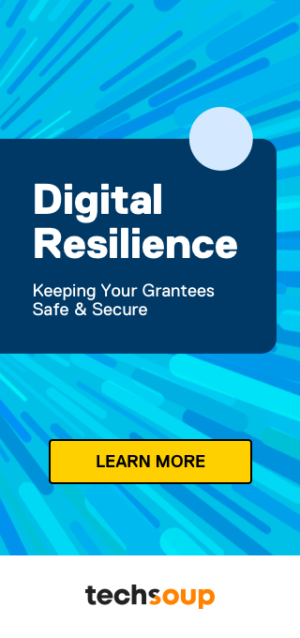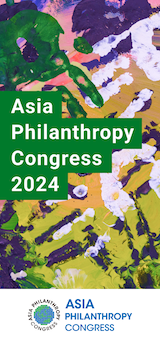A 20-year transformative journey from a local women’s fund in Asia.
Gender justice in Asia is ongoing. Data compiled by UN Women reveals significant areas of persistent gender inequality in the political, economic and social sectors. No country in the region has achieved gender parity in government, women continue to have higher rates of unemployment, spend more time than men on unpaid care and domestic work, and in some parts of the region, rates of child marriage and intimate partner violence reach nearly 30 percent (Global SDG Indicators Database, 2 Despite advances, the fight for gen 019).
HER Fund is the first and only local women’s fund in Hong Kong. By mobilising resources for women’s empowerment, gender equality, and the promotion of social change, HER Fund has been actively working to address inequality for women, girls and gender nonconforming people since 2004.
Two decades of empowering marginalised communities in Asia through grassroots grants, capacity building, and leadership development has given us invaluable experience. Turning our focus inward, it’s time to reflect on what the Asian philanthropy sector truly needs to achieve gender justice across the region.

The co-learning group of the Transformative Feminist Leadership Programme has hosted gatherings once a month since 2021 in the hope of building the capacity of mentors. Cred: Courtesy of HER Fund.
Gender perspective is key
Gender equality continues to be an overlooked issue in Asia. In Hong Kong specifically, efforts dedicated to gender justice are often tokenistic, superficial, or cursory in nature, while the real needs of the community are ignored. Furthermore, it is not a priority issue for most funders in Hong Kong. The need for more organisations and community groups focused on gender equality is apparent. But this requires increased donor resources and a stronger base of social support.
Women’s funds across the globe play a critical role in advancing gender equality and supporting feminist movements, but donors and funding groups must work in closer partnership to continue and improve progress. Close partnership and collaboration will bring to light the intersections between gender equality and higher priority donor issues – like youth development, education, and health. Through dialogue and collaboration, donors can gain a deeper understanding of how inequalities intersect and how their funding can be more impactful.
A collaborative approach will lead to a more diverse funding landscape for gender equality organisations. Ultimately, it will contribute to building a stronger movement for gender equality within Hong Kong and the region.
Nurture smaller, community-led organisations
HER Fund’s community-driven approach has granted us more flexibility to fund small groups who play a pivotal role in their community but may not have the same organisational management experience as larger, more established organisations. Many of our grantee partners are run by volunteers who are driven by a passion for advocacy work, but often have limited experience with running an organisation.
HER Fund’s structure enables us to nurture these grassroots organisations. By investing in time and capacity building projects, we can help them to see the importance of operational, organisational, and/or financial management systems to ensure the long-term sustainability of their work.
Larger foundations may be wary of supporting fledgling organisations, but can still reach these grassroots groups through community-based funding mechanisms like women’s funds or a community foundation model.
Strengthen capacity through community connection and trust
To accompany our grantee partners and strengthen their capacity, we have worked hard to establish deep connections built on trust. Most of us come from the feminist movement and the grassroots community, which has helped our grantee partners to trust we understand the issues and concerns they face at the community level.
That process has not always been perfect. We have made mistakes. But we try to operate from a place of accountability and transparency with grantee partners, and actively create spaces for them to share their wisdom and experience. Ultimately, we seek to create more sustainable community institutions and stronger community leaders. As we experience growing uncertainty and instability on a global and local level, we believe community institutions and grassroots organisations are essential in the fight against inequality.

HER Fund is eager to create space for knowledge exchange and co-learning.
Cred: Courtesy of HER Fund.
Why is this a beneficial model for philanthropy in Asia?
The women’s fund model is one in which resources are pooled from multiple donors and channeled to community-based organisations through a grantmaking process. Research by the Bridgespan Group in 2021 points to growing interest and growth in collaborative giving mechanisms and platforms such as these. As Asia vies to position itself at the forefront of global philanthropy, the region should be aligned with trends in other parts of the world while adapting them to the regional context.
Some countries are taking steps in the right direction. Singapore is host to several new initiatives such as the Asia Community Foundation and the Asia Philanthropy Circle. Hong Kong is also working to create more avenues for philanthropic giving and become a regional philanthropy hub (Centre for Asian Philanthropy Society report, February 2023).
The younger generation of philanthropists in the region have also demonstrated increased interest in supporting social impact work. HER Fund strongly supports these initiatives. Concurrently, to shift resources to where they are most needed, we believe more needs to be done to increase focus on community-based and collaborative funding mechanisms.
‘As Asia vies to position itself at the forefront of global philanthropy, the region should be aligned with trends in other parts of the world.’
Our recommendations include:
Create more national and local community foundations/funds throughout the region. While some of these models exist, there is a need for more community-focused funding entities. For example, outside of HER Fund, only five Asian countries (India, South Korea, Nepal, Mongolia, and Fiji) have a national women’s fund. Encouraging funding mechanisms such as these will require sector experts to help donors better understand the benefits of supporting collaborative entities.
Focus on intersectional grantmaking and getting resources closer to grassroots level, where they are most needed. While these funds may focus on different thematic areas, it is important to encourage funding and grantmaking models that embrace an intersectional lens, integrate a gender perspective, and support work that connects different sectors and social movements (for example, ensuring that youth economic empowerment programmes also integrate a gender perspective into their work).
Highlight and recognise the importance of capacity strengthening for grantee partners. Often funders don’t see the need for funding an intermediary over supporting the grantees directly. Helping funders better understand the value and essential role that grantmaking funds play, particularly with regards to capacity strengthening and close accompaniment for grantee partners, is essential for increasing these types of funding mechanisms in the region. From HER Fund’s experience, it is also important to make sure that community funds are equipped to provide capacity strengthening that is responsive to grantee partners’ needs and resonates with their level of organisational maturity.
Women’s funds in the region provide an important model for this work and can serve as key partners and collaborators in setting up more collaborative and community-based funds. We hope opportunities for dialogue and partnership with the philanthropy community will continue and Asia will prevail as a leading force in social justice giving.
Judy Kan is executive director at HER Fund.
Jennifer Friedman is a consultant at HER Fund.







Comments (0)